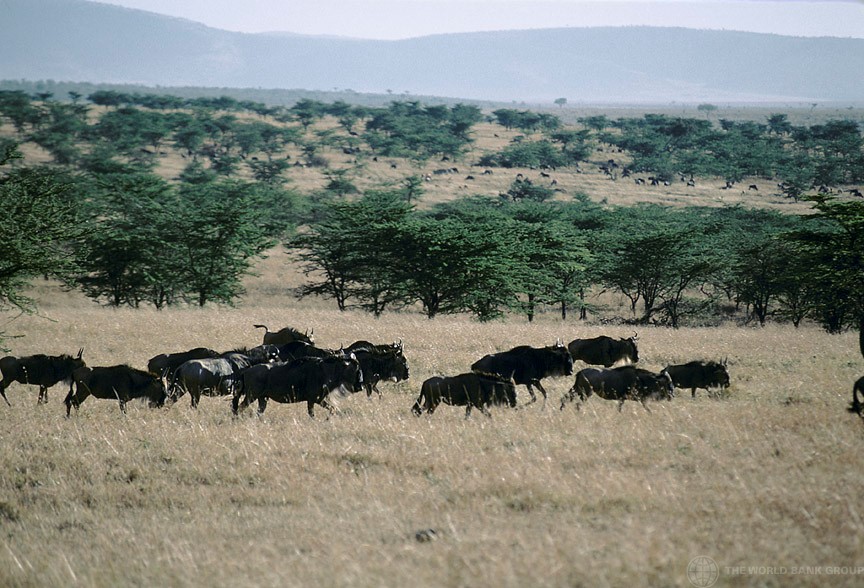Kenya

Share
Related Links
When Good Conservation becomes Good Economics : Kenya’s Vanishing Herds
Keywords
Kenya, protected areas, wildlife, Biodiversity, Jobs, poverty, tourism
Kenya Tourism and Sustainability
CHALLENGE
Nature-based tourism makes a significant contribution to exports, GDP, jobs, and poverty reduction in Kenya. But habitat loss, overcrowding at key tourist sites, depleting wildlife numbers, and the ever-present threat of terrorism have generated a perfect storm of problems for the sector.
Recent population monitoring shows that long-term declines of many of the charismatic species that attract tourists – including lions, elephants, giraffes, and impalas - are occurring at the same rates within the country's national parks as outside of these protected areas. This is partly because protected areas in Kenya are far too small to be sustainable. As a result, the wildlife depends as much on land adjacent to a protect area as on the protected area itself. Unfortunately, most of this adjacent land is being converted to other non-compatible uses. The implementation of “ecological easements” offer some promising solutions, but the feasibility of this approach depends upon economic incentives, and the opportunity costs of land.
APPROACH
This activity will focus on a critical and often overlooked threat to the survival of the key wildlife tourist attraction: habitat loss and the need to preserve corridors to assure the long-term sustainability of wildlife and mega-fauna.
First, the activity will investigate land related trade-offs. Is there more to be gained from building a tourism product or converting land to agriculture - in terms of GDP, jobs, and poverty impacts? Second, it will conduct a regional analysis in the Mara region to determine the scope for increasing the payoffs from tourism without undermining sustainability. The Mara has been chosen due to the pressures on this globally significant natural asset and its tremendous potential to generate further conservation-related economic benefits. Finally, the study will also identify the benefits and ecological costs of infrastructure throughout Kenya and thus assist in the planning of corridors and preemptive protection of habitats.
RESULTS
This project has been completed. A report titled When Good Conservation Becomes Good Economics was developed and launched in an event held in Nairobi on December 11, 2019, which was very well attended by a wide cross-section of stakeholders and government officials across numerous departments and ministries.
The report findings highlighted for the first time how wildlife loss causes economic loss in Kenya. It tackled the issue of whether there are trade-offs between wildlife and economic growth, especially given the intensifying pressures on land and natural resources. The report also outlined solutions and a way forward for Kenya to find that the balance between economic development without losing a focus on conservation. The evidence presented in this report suggests that there are wide opportunities to stop the dramatic collapse of wildlife populations and that investing in the tourism sector yields significant benefits which are especially pro-poor. The findings identified a set of tools, developed in this report, which can be used by the planners in order to consider the long-term implications of irreversible decisions and harness the full potential that the country’s natural endowment offers. Following the launch of the report, the Government of Kenya submitted a formal request for technical and financial support to advance the dialog on enhancing protection of wildlife habitats and populations within protected areas and outside of the protected areas
The report findings were used to inform the preparation of Kenya SCD and will be used to provide inputs to the CPF (to be prepared this FY as well). The report was immediately recognized by the stakeholders as a useful tool for advancing the dialog on wildlife conservation with the Government and other stakeholders. As of a result of this analytical activity, the Government of Kenya has invited the Bank to help develop a wildlife strategy.
For stories and updates on related activities, follow us on twitter and facebook , or subscribe to our mailing list for regular updates.
Last Updated : 06-16-2024








